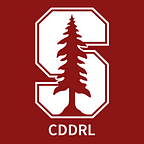Whither Parties?
by Didi Kuo, CDDRL’s Program on American Democracy in Comparative Perspective
Scholars of comparative politics have long examined political parties as organized vehicles of mass mobilization, interest mediation, and policy formation. But with mounting evidence that parties in the twenty-first century serve different purposes, how are we to understand the role of traditional, mainstream parties today? This talk examines factors driving a decline in traditional party organization, which includes an erosion of social and intermediary groups, insufficient state capacity, delegation of party functions to private interests, and ideological convergence between the mainstream parties.
Hear the audio of the talk and read the summary bellow.
Once a centralizing force of the democratic process, political parties have eroded over the past forty years. Polarization between the parties has been on the rise since the 1970s; it has been accompanied by Congressional gridlock, and general antipathy and incivility between partisans. Voter attachments to parties are also fading. During the presidential election of 2016, a plurality of voters — upwards of 40% — identified as independents. As many observers have noted, the political center no longer holds. In “Whither Parties,” I turn attention to the ways parties have abdicated their representative functions and contributed to today’s crisis of governance. Parties once served as integral intermediaries between citizens and elected representatives. They mobilized and educated party members, recruited volunteers and activists, and established ties with civic and professional associations and local communities. Over the past thirty years, however, parties have shifted from these traditional methods of engagement. One of the ways parties have changed is that they have evolved away from mass membership organizations. Historically, the parties that emerged across North America and Western Europe grew out of legislative factions that existed prior to the expansion of voting rights. The extension of suffrage, combined with the social divisions created by the industrial and national revolutions of the eighteenth and nineteenth century, led to splits that still exist today. Political parties emerged from these divisions; parties were built through top-down coordination of campaigns and strategies, and bottom-up organization of interests in local communities. In the late nineteenth-century United States, for example, the Republicans and Democrats established national organizations, developed techniques of campaign finance, and whipped roll call votes in Congress. At the same time, a wellspring of social organization — among business groups, farmers, laborers, and religious societies — created local and state ties between voters and party organizations. This ushered in modern party democracy, as parties’ ongoing linkages to social groups provided them with supporters, volunteers, and ideas for new policies. Mass membership created multiple sources of accountability between citizens and politicians. Further, party ties to distinct interests and factions led to competition over fundamental issues of state and society, including the creation of new social programs and regulatory institutions. One major shift in how parties engage voters is that mass membership organizations have given way to new types of party linkages. The television age led campaigns to focus on advertisements and candidate appearances. Since the 1970s and 80s, parties have also devoted fewer resources to voter engagement, and turned instead towards soliciting campaign funds from lobbies and donors, and enlisting of political marketing and strategy firms to run advertising and messaging campaigns. They have increasingly outsourced the tasks of interest aggregation, representation, and mobilization to advocacy organizations and interest groups. Now, lobbying firms or small-scale social movements are more likely to provide messages and information to voters, rather than parties. 1 Parties of the twenty-first century remain critical in democracies. They are the foremost professional organizations dedicated to recruiting candidates, winning elections, and setting the legislative agenda. However, unlike parties of the twentieth century, they are less likely to serve as crucial intermediaries between citizens and the state. In the talk, I also discuss the problems of civic decline and ideological convergence between the parties. The combination of these factors has created a vacuum for extremist politicians and ideas to capitalize on discontent and dismantle, or at least disrupt, democratic institutions.
